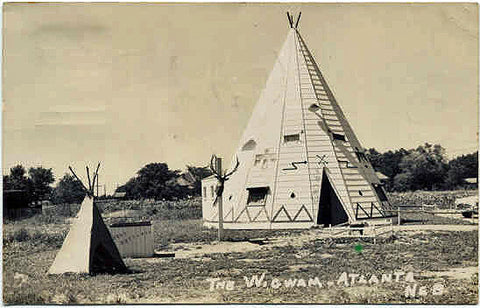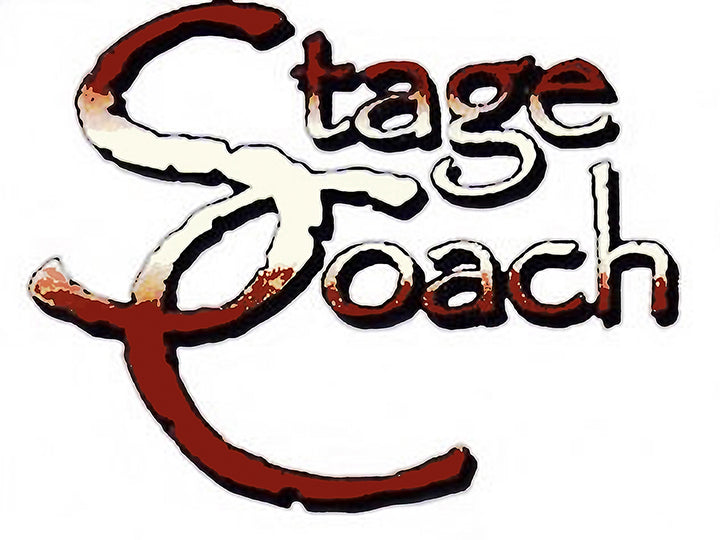Currently All David Rosales Jewelry Requires 6 Weeks To Make
Currently All David Rosales Jewelry Requires 6 Weeks To Make
June 16, 2015 2 Comments
I have been in the souvenir business most of my life. My grandparents, Leon and Mazie Henline, and parents, Jim and Joyce Glandon built the Wigwam Souvenir Shop in Atlanta Nebraska just after I was born in the early 1950’s. My uncle, Royce Henline started the first of several souvenir shops in our family in the late 1940’s and his son Chuck still continues with the tradition. Another Uncle and Aunt, Mac and Patsy McDonald owned two souvenir shops in Kansas in the 1950’s. My wife and I now own the Stagecoach in Kearney Nebraska that my parents built in 1973.

Today, when most people think of the souvenir shop they think of souvenir shops found in attractions at museums and zoos and amusement parks such as Disney World. You probably also think of shops in resort areas at the entrances to National Parks. You can find whole villages and towns that cater to tourists next to these attractions such as Estes Park CO, Gatlinburg TN, Jackson Hole WY to name just a few. Anytime you find a large attraction you will find souvenir shops both inside the attraction and outside the perimeter.
Walt Disney wasn’t happy with all the shops surrounding Disneyland so when he built Disney World he made sure he had plenty of land (40 square miles) to block off any other eateries, hotels and souvenir shops. That way, Disneyworld really was a “World” unto itself. Of course, as Disney World grew they couldn’t supply all the hotels, food and souvenirs that people wanted and a whole tourist area grew up around the park anyway.
Tourists have been bringing home souvenirs of their travels for as long as people have been traveling. Ancient Egyptians and Sumerians would bring home souvenirs of the lands they visited. The Phoenicians sailing the ancient seas would bring exotic artifacts with them as they sailed from various ports. In the Middle Ages, travelers in France and England would go on pilgrimages to Rome and Jerusalem and other far-flung locations. Much like tourists of today they traveled to see sites and relics they had heard about from others. Of course, to prove they had been there they would bring home souvenirs of the exotic locals they had visited.
Sometimes trade in souvenirs got rather unusual. Early in the twentieth century travelers to Egypt would bring home not just pottery and jewelry but actual fingers and hands and feet of mummies and sometimes even whole mummies. I can remember in 1975, while visiting the Valley of the Kings near Luxor, a boy trying to sell me a mummified hand off what he said was a real mummy. I don’t know if it was real but it sure looked like the real thing. Whole families would be in this illegal trade.
Cabinets of Curiosities were very popular in the late 1880’s and early 1900’s. These Cabinets of Curiosities would contain artifacts that the traveler had collected in his travels. Many a world traveler would display his “finds” in his Cabinet. These rooms full of oddities found throughout the world, some real and some fake, were the precursor of our modern natural history museums. Some of these Cabinets of Curiosities found their way into later day souvenir shops and roadside attractions.
The railroads and National Parks combined to bring some of America’s first tourists together. One of our country’s great contributions, the National Park, was in it’s infancy around the turn of the century and the ever inquisitive American population needed a way to get to these beautiful wonders. The railroads built rail lines to the parks in anticipation of this influx of tourists. Of course, when the tourists arrived, they needed a place to stay so the railroads bankrolled some of the great lodges of the west, Old Faithful at Yellowstone, El Tovar at the Grand Canyon, Bryce Canyon lodge, Glacier Lake lodge and many more. Souvenirs shops were a staple at these locations, many selling Native American crafts.

Fred Harvey was also instrumental in bringing souvenirs to his Harvey House’s that popped up along various train depots in the southwest mainly on the Santa Fe Railway. He was the first to provide fine restaurants along the rail routes and make famous the “blue plate special” served by his equally famous “Harvey Girls.” There were 84 Fred Harvey facilities altogether including the famous El Tovar at Grand Canyon and the La Fonda in Santa Fe, both still in operation. Navajo rugs for sale are pictured in many of the old pictures associated with these great establishments.
The Fred Harvey company and the Santa Fe Railway changed forever the way Native American Art was viewed and really brought to the world this craze for Native crafts that lasts even today. The next time you are in Santa Fe at the La Fonda or the Grand Canyon at the El Tovar and you purchase a souvenir, remember you are buying from one of the first souvenir shops of the American West.
Be sure and check out some of our new souvenirs here.
November 12, 2020
As a very your child – kindergarten age, I lived in Atlanta for a year or so. This would have been 1963 or so. I seem to remember the WigWam being in a different spot closer to our house, which was on what is now called Hodges Street I think. Was the teepee portion of the Wigwam moved when it expanded? If the family had any extra money (rare) my mom would send me to the wigwam for popsicles or ice cream bars…what memories!
August 31, 2025
April 16, 2025 1 Comment
Discover the rich history, striking beauty, and ancient origins of Egyptian turquoise, mined in the Sinai and treasured since the days of the Pharaohs.
January 24, 2024 1 Comment

Terry Henline
May 26, 2021
As a child, I clearly recall the Wigwam in Atlanta, Nebraska. Leon and Mazie were my Great Uncle and Aunt. My Grandparents were Alma and Ora Henline and they lived on a farm about a mile north of Atlanta. Their son Royal Henline was my father and my family lived on the farm while my father fought in World War II. Many times I rode with Uncle Leon while he delivered mail to farms in the surrounding area. He always drove a big Hudson. I do recall Royce as well. I went with Uncle Leon to pick up movie reels at the train station and in the Summer he would show the movies on the side of the Henline General Store in Atlanta. Many fond memories.